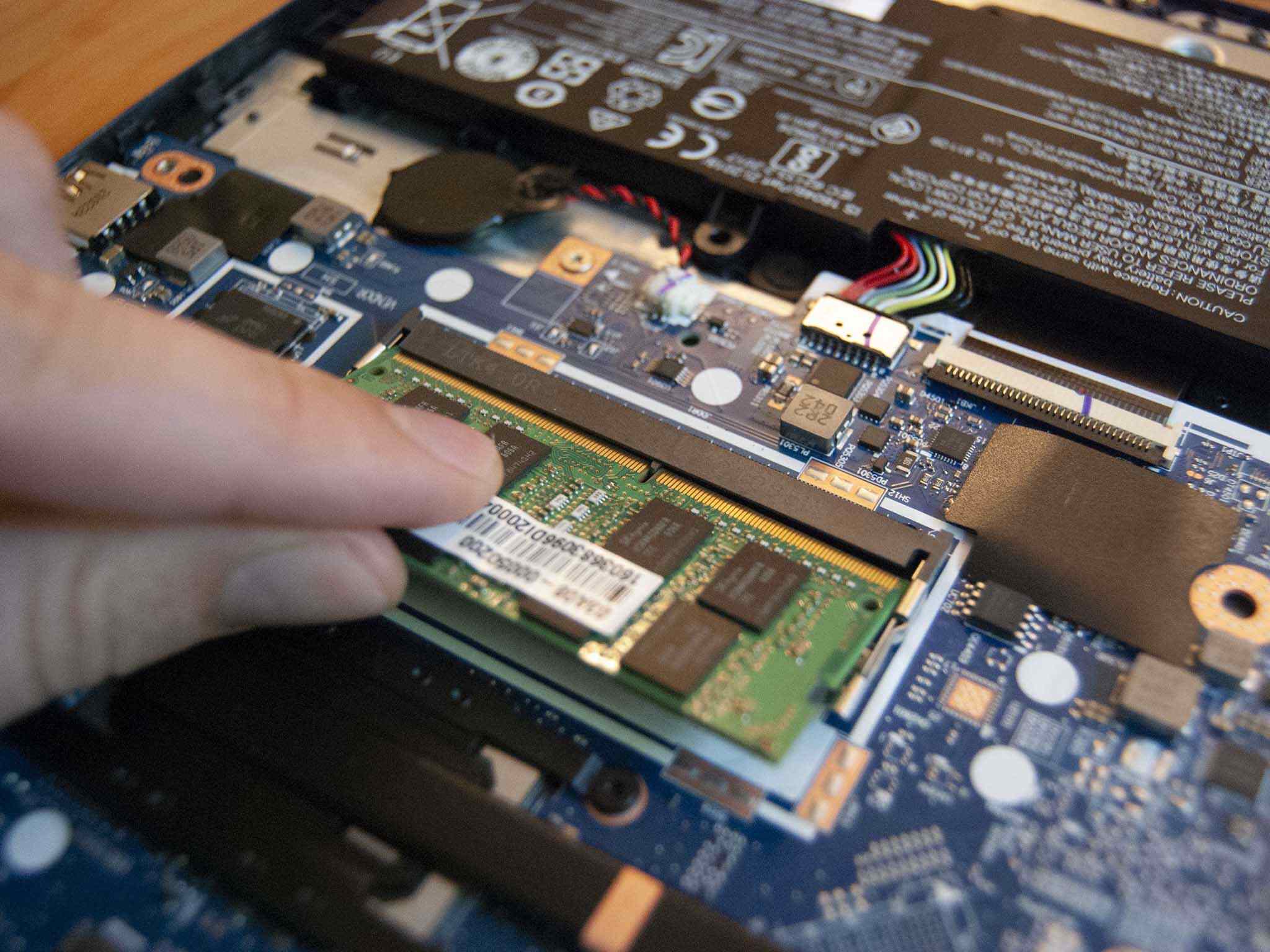Introduction
Chrome, with its sleek design and lightning-fast browsing capabilities, has become one of the most popular web browsers globally. However, one issue that users often encounter is high CPU usage, which can slow down their computer and disrupt their browsing experience. If you’ve ever wondered why Chrome is taking up so much of your CPU’s resources, you’re not alone.
Before diving into the reasons behind Chrome’s high CPU usage, it’s essential to understand what CPU usage is. The CPU (Central Processing Unit) is the primary component of a computer responsible for executing tasks and processing data. CPU usage refers to the percentage of the CPU’s capacity being utilized at any given time. When Chrome consumes a significant amount of CPU resources, it can lead to sluggish performance, decreased battery life on laptops, and even system crashes.
Understanding why Chrome is using so much CPU power involves examining various factors, including extensions and add-ons, multiple tabs and processes, unoptimized websites and web applications, hardware and system resources, and potential virus or malware infections. By identifying these culprits, you can take steps to reduce Chrome’s CPU usage and improve your browsing experience.
In this article, we will delve into the common reasons behind Chrome’s high CPU usage and provide tips on how to mitigate this issue. So, if you’ve been frustrated with Chrome’s performance lately, read on to discover the potential causes and effective solutions.
What is CPU usage?
CPU usage, or Central Processing Unit usage, refers to the amount of utilization of the CPU’s computational capabilities at a given time. It is measured as a percentage, indicating the proportion of the CPU’s capacity being used by running processes and tasks. CPU usage is a critical metric that helps determine the efficiency and performance of a computer system.
When a program or application is running, it requires the CPU’s processing power to execute tasks and perform operations. The more computational tasks a program demands, the higher the CPU usage will be. Similarly, when multiple programs or processes are running simultaneously, the CPU usage increases to accommodate the workload.
CPU usage can vary depending on the nature of the tasks being performed. For example, resource-intensive applications such as video editing software or computer games typically require a higher percentage of CPU usage to deliver smooth and responsive performance. On the other hand, less demanding tasks like word processing or web browsing may utilize a lower percentage of CPU resources.
Monitoring CPU usage is crucial for optimizing system performance and ensuring efficient resource allocation. Operating systems often provide tools, such as the Task Manager in Windows or the Activity Monitor in macOS, to track and display real-time CPU usage. These tools are invaluable in identifying processes that consume excessive CPU resources, allowing users to address performance bottlenecks and take necessary actions.
High CPU usage can lead to several issues, such as slow system responsiveness, increased power consumption, and overheating. It may result in diminished performance across all running applications and can even cause system freezes or crashes. Therefore, understanding and managing CPU usage is essential to maintain a smooth and efficient computing experience.
In the following sections, we will explore the reasons behind Chrome’s high CPU usage and provide practical tips to reduce and optimize CPU usage specifically for the Chrome browser.
Understanding Chrome’s CPU usage
Chrome is known for its multi-process architecture, which means that each tab and extension runs in its own separate process. While this design enhances security and stability, it can also contribute to higher CPU usage compared to other browsers.
When you open Chrome and start browsing, each tab you open and every extension you use will utilize CPU resources. This is because each tab and extension requires processing power to render web pages, run scripts, and handle user interactions. As a result, Chrome’s CPU usage can quickly add up, especially if you have multiple tabs and extensions active simultaneously.
One important concept to understand is that Chrome creates a separate process for each tab, extension, and plugin. This means that even if one tab has a resource-intensive webpage or script running, it won’t directly affect the performance of other tabs. Each process has its own CPU allocation, allowing Chrome to isolate resource-heavy tasks and prevent them from impacting the overall browser performance.
However, this segregated process model can lead to excessive CPU usage when multiple tabs or extensions are consuming significant resources simultaneously. Chrome’s Task Manager, accessible through the Chrome menu under “More Tools,” provides a helpful overview of each process and its associated CPU usage. It allows you to identify any specific tabs or extensions that may be responsible for high CPU usage.
By understanding Chrome’s multi-process architecture and using tools like the Task Manager, you can gain insight into the specific sources of high CPU usage. This awareness enables you to take targeted actions to reduce Chrome’s CPU usage and improve overall system performance.
In the next section, we will explore some common reasons behind high Chrome CPU usage and discuss effective strategies to mitigate this issue.
Common reasons for high Chrome CPU usage
There are several common reasons why Chrome may exhibit high CPU usage. By understanding these factors, you can pinpoint the underlying causes and take appropriate measures to reduce Chrome’s CPU usage. Here are some of the most prevalent culprits:
1. Extensions and add-ons: While Chrome extensions enhance functionality and offer valuable features, they can also consume significant CPU resources. Poorly optimized or outdated extensions can cause a spike in CPU usage. It’s advisable to disable or remove unnecessary extensions and regularly update the ones you use.
2. Multiple tabs and processes: Chrome’s multi-process architecture can contribute to high CPU usage if you have numerous tabs and extensions open simultaneously. Each tab consumes CPU resources independently, so closing unnecessary tabs or utilizing tab management extensions can alleviate CPU strain.
3. Unoptimized websites and web applications: Some websites and web applications may contain heavy scripts, animations, or ads that require substantial CPU power to render. Performance-hungry web content can significantly impact Chrome’s CPU usage. Consider using ad-blockers and disabling unnecessary animations to reduce CPU load.
4. Hardware and system resources: Insufficient hardware specifications, such as low RAM or an outdated CPU, can cause Chrome to consume more CPU resources. Upgrading your hardware or closing resource-intensive applications running in the background can help alleviate the strain on your CPU.
5. Virus or malware infections: Malicious software can run hidden processes that consume significant CPU resources, leading to high CPU usage by Chrome. Regularly scan your system for malware and keep your antivirus software up to date to minimize the risk of infections.
Identifying which of these factors is causing high CPU usage in Chrome can be done by monitoring the Chrome Task Manager, disabling or removing unnecessary extensions, and performing system scans for malware. By addressing these common reasons, you can significantly reduce Chrome’s CPU usage and improve overall system performance.
In the following section, we will provide useful tips and strategies to help reduce Chrome’s CPU usage.
Extensions and add-ons
Extensions and add-ons are one of the primary reasons behind high CPU usage in Chrome. While they provide additional functionalities and enhance the browsing experience, certain extensions can be poorly optimized or become outdated, leading to increased CPU usage. Here are some tips to manage extensions and reduce Chrome’s CPU usage:
1. Disable or remove unnecessary extensions: Take a moment to review the extensions you have installed in Chrome. If there are any that you no longer need or use frequently, consider disabling or removing them. This can help reduce CPU usage by eliminating the additional processes and resources associated with these extensions.
2. Monitor extension performance: Chrome provides valuable insights into each extension’s CPU and memory usage through the Chrome Task Manager. Access it by pressing Shift + Esc or by going to the Chrome menu -> More Tools -> Task Manager. Keep an eye on extensions that consume a significant amount of CPU resources and consider disabling or finding alternatives for them.
3. Update extensions: Outdated extensions may have compatibility issues or inefficient code that can lead to higher CPU usage. Check for updates regularly, either by enabling automatic updates in the Chrome settings or manually visiting the extensions’ respective pages in the Chrome Web Store and installing the latest versions.
4. Use lightweight alternatives: If you find that an extension you rely on is causing excessive CPU usage, consider looking for alternative extensions that provide similar functionality but with lower resource demands. Reading user reviews and checking the extension’s rating can help you identify lightweight options.
5. Enable extension suspension: Chrome offers a feature called “Extension Suspension” that automatically suspends inactive or idle extensions, reducing their impact on CPU usage. To enable this feature, go to Chrome Settings -> Extensions, scroll down to the desired extension, and click on “Details.” Then, toggle on the “Suspend” option.
By managing your extensions effectively, you can significantly reduce Chrome’s CPU usage and improve its overall performance. Regularly auditing your extensions and optimizing their usage will help ensure that they don’t unnecessarily strain your CPU resources.
In the next section, we’ll explore another common reason for high CPU usage in Chrome: multiple tabs and processes.
Multiple tabs and processes
Chrome’s multi-process architecture, while offering advantages, can also contribute to high CPU usage, especially when you have multiple tabs and processes running simultaneously. Each open tab and active extension operates in its own separate process, consuming CPU resources independently. Here are some tips to manage multiple tabs and reduce Chrome’s CPU usage:
1. Close unnecessary tabs: Each open tab consumes CPU resources, even if it’s inactive or minimized. Close any tabs that you don’t immediately need or that are running resource-intensive content. By reducing the number of open tabs, you can alleviate the strain on your CPU.
2. Utilize tab management extensions: Extensions like “The Great Suspender” and “One Tab” help optimize CPU usage by suspending or consolidating inactive tabs. They temporarily unload tabs in the background, reducing their CPU and memory footprint. Consider using these extensions to free up CPU resources while still being able to access your tabs when needed.
3. Identify and manage resource-intensive tabs: Chrome’s Task Manager can help identify tabs with high CPU usage. Press Shift + Esc or go to the Chrome menu -> More Tools -> Task Manager to view the individual CPU consumption of each tab. If you notice any tabs consistently consuming excessive CPU resources, consider closing or reloading them to reduce the strain on your CPU.
4. Enable lazy loading: Chrome offers an experimental feature called “Tab Throttling” or “Lazy Loading” that delays the loading of inactive tabs until you switch to them. By enabling this feature, you can prioritize CPU resources for the active tab, thereby reducing overall CPU usage. To enable tab throttling, type “chrome://flags” in the address bar, search for “Proactive Tab Freeze and Discard” or “Tab-Freezing” and enable the corresponding flag.
5. Consider using a different browser profile: Chrome allows you to create multiple user profiles, each with its own set of extensions and preferences. By creating a separate profile specifically for heavy browsing or work-related tasks, you can isolate those tabs and processes from your main browsing session, reducing CPU usage in your primary profile.
By managing your tabs and processes efficiently, you can minimize Chrome’s CPU usage and ensure smooth browsing performance. In the next section, we will explore another factor that can contribute to high CPU usage in Chrome: unoptimized websites and web applications.
Unoptimized websites and web applications
Unoptimized websites and web applications can significantly contribute to high CPU usage in Chrome. Certain websites may contain heavy scripts, animations, or ads that require substantial CPU power to render. Here are some tips to mitigate high CPU usage caused by unoptimized web content:
1. Use ad-blockers: Online advertisements often consume a significant amount of CPU resources. Installing an ad-blocker extension can help reduce CPU usage by blocking resource-intensive ads. Not only does this improve browsing performance, but it also enhances page load times.
2. Disable unnecessary animations: Some websites use animations and transitions that can consume excessive CPU resources. If you find certain animations to be unnecessary or distracting, consider disabling them. Most modern browsers, including Chrome, offer options to disable or limit the playback of animations.
3. Enable hardware acceleration: Chrome has a feature called hardware acceleration that offloads some of the workload from the CPU to the computer’s graphics processing unit (GPU). Enabling hardware acceleration can help improve browser performance and reduce CPU usage, especially when rendering complex web content. To enable hardware acceleration, go to Chrome Settings -> Advanced -> System, and toggle on “Use hardware acceleration when available.”
4. Clear browsing data: Over time, your browsing history, cache, and cookies can accumulate, affecting Chrome’s performance and increasing CPU usage. Regularly clearing your browsing data can help improve performance by freeing up resources. In Chrome, navigate to Settings -> Privacy and Security -> Clear browsing data to remove these temporary files.
5. Optimize web content: If you are a website owner, optimizing your website’s code and content can help reduce CPU usage for visitors. Minify scripts and stylesheets, compress images, and optimize animations to ensure a smoother browsing experience and lower CPU overhead.
By taking steps to manage unoptimized websites and web content, you can significantly reduce Chrome’s CPU usage and enjoy a faster and more responsive browsing experience. In the next section, we will explore another factor that can contribute to high CPU usage in Chrome: hardware and system resources.
Hardware and system resources
Hardware and system resources play a crucial role in determining the CPU usage of Chrome. If your computer has insufficient resources or outdated components, it can cause Chrome to consume more CPU power. Here are some considerations to optimize hardware and system resources:
1. Upgrade hardware components: If your computer’s CPU, RAM, or storage is outdated or insufficient for modern web applications, upgrading these components can help reduce CPU usage. A faster processor, more RAM, and an SSD can significantly improve Chrome’s performance and decrease CPU strain.
2. Close resource-intensive applications: Applications running in the background can consume CPU resources, impacting Chrome’s performance. Close any resource-intensive programs or processes that are not necessary while browsing to free up CPU power for Chrome.
3. Limit background page processes: Chrome allows some web pages to run processes even when they are in the background. This can consume unnecessary CPU resources. To mitigate this, go to Chrome Settings -> Advanced -> System, and toggle off the option “Continue running background apps when Google Chrome is closed.”
4. Optimize power settings: If you’re using a laptop, adjusting the power settings can help optimize CPU usage. Set your power plan to “Balanced” or “Power Saver” mode to reduce CPU frequency and power consumption when running on battery. This can help extend battery life and lower CPU usage in Chrome.
5. Close unnecessary browser windows: If you have multiple instances of Chrome open, each with numerous tabs, it can strain your CPU. Close any unnecessary browser windows and only keep the ones with active tabs that you need. This can help prevent excessive CPU usage.
By optimizing your hardware and system resources, you can improve Chrome’s CPU usage and overall browsing experience. Assess your computer’s specifications, close unnecessary applications, and adjust power settings to ensure that your system can efficiently handle Chrome’s demands.
In the next section, we will discuss another crucial factor that can contribute to high CPU usage in Chrome: virus or malware infections.
Virus or malware infections
Virus or malware infections can lead to high CPU usage in Chrome. Malicious software can run hidden processes that consume significant CPU resources, negatively impacting Chrome’s performance. Here’s what you can do to mitigate high CPU usage caused by virus or malware infections:
1. Use reputable antivirus software: Install and regularly update reliable antivirus software to scan your system for malware. Schedule automatic scans to detect and remove any harmful programs that may be consuming CPU resources.
2. Perform malware scans: In addition to your antivirus software, consider using dedicated anti-malware tools to scan your computer. Tools such as Malwarebytes or Spybot can target and remove malware that may have evaded detection by your primary antivirus software.
3. Update your operating system and applications: Keeping your operating system and applications up to date ensures that you have the latest security patches and bug fixes. Vulnerabilities in outdated software can be exploited by viruses and malware, leading to increased CPU usage. Enable automatic updates whenever possible.
4. Be cautious of suspicious websites and downloads: Avoid visiting suspicious websites or downloading files from untrusted sources. These can often be sources of malware infections. Be mindful of phishing attempts and always verify the legitimacy of websites before providing personal information.
5. Reset or reinstall Chrome: If you suspect that your Chrome browser has been compromised, you can try resetting it to its default settings. Keep in mind that this will remove your browsing history, cookies, and extensions. If the issue persists, you may want to consider reinstalling Chrome altogether.
By taking proactive measures to prevent and address virus or malware infections, you can minimize the risk of high CPU usage in Chrome. Regularly scan your system, update your software, and exercise caution when browsing the internet to ensure a safe and smooth browsing experience.
In the next section, we will provide practical tips and strategies to help reduce Chrome’s CPU usage and optimize its performance.
Tips to reduce Chrome’s CPU usage
If you’re experiencing high CPU usage in Chrome, there are several tips and strategies you can implement to reduce CPU usage and optimize its performance. Here are some practical steps you can take:
1. Update Chrome: Ensure that you are using the latest version of Google Chrome. Updates often include performance improvements and bug fixes that can help reduce CPU usage.
2. Disable or remove unnecessary extensions: Review your extensions and remove any that you don’t regularly use. Disabling or removing unnecessary extensions can reduce CPU usage by eliminating additional processes.
3. Monitor Chrome’s Task Manager: Use Chrome’s built-in Task Manager to identify any tabs, extensions, or processes that are consuming excessive CPU resources. This will help you pinpoint the sources of high CPU usage and take appropriate action.
4. Consider alternative lightweight extensions: If you rely on certain extensions but notice that they contribute to high CPU usage, look for alternative options that offer similar functionality with lower resource demands.
5. Manage your tabs: Close unused tabs and limit the number of active tabs to reduce CPU usage. Consider using tab management extensions that can automatically suspend or consolidate inactive tabs to free up resources.
6. Optimize web content: Minimize resource-heavy elements such as animations, ads, and scripts on websites. Use ad-blockers to reduce CPU usage caused by ads. Disabling unnecessary animations and enabling hardware acceleration can also help optimize Chrome’s CPU usage.
7. Perform regular system maintenance: Keep your operating system, antivirus software, and other applications up to date to ensure maximum performance and security. Regularly clear browsing data, such as cache and cookies, to free up resources.
8. Monitor system resources: Use system monitoring tools to keep an eye on CPU usage, memory usage, and disk utilization. By monitoring these resources, you can identify any bottlenecks and take appropriate action.
9. Consider hardware upgrades: If your computer’s hardware is outdated or inadequate, consider upgrading your CPU, adding more RAM, or using a faster storage device. These upgrades can significantly improve Chrome’s performance and reduce CPU usage.
10. Keep your system free of malware: Regularly scan your system for viruses and malware using reputable antivirus software. Avoid visiting suspicious websites and downloading files from untrusted sources.
By implementing these tips, you can effectively reduce Chrome’s CPU usage and enhance its performance. Experiment with different strategies to find the optimal balance between functionality and CPU optimization for your specific browsing habits.
Conclusion
High CPU usage in Chrome can have a significant impact on your browsing experience, causing sluggish performance and reduced system responsiveness. However, by understanding the factors contributing to high CPU usage and implementing the right strategies, you can optimize Chrome’s performance and reduce CPU strain.
In this article, we explored the common reasons behind high CPU usage in Chrome, including extensions and add-ons, multiple tabs and processes, unoptimized websites and web applications, hardware and system resources, and virus or malware infections. We discussed practical tips such as disabling unnecessary extensions, managing tabs effectively, optimizing web content, upgrading hardware, and maintaining a secure system to minimize CPU usage.
Remember, each user’s browsing habits and system configuration can vary, so it’s essential to experiment and find the strategies that work best for you. Regularly monitoring Chrome’s Task Manager, staying up to date with software updates, and practicing safe browsing habits are key to maintaining an optimal balance between functionality and CPU usage.
By implementing these tips and taking proactive measures to manage your browsing experience, you can enjoy a smoother, faster, and more efficient Chrome experience. Say goodbye to high CPU usage, and hello to an optimized and enjoyable web browsing experience.

























